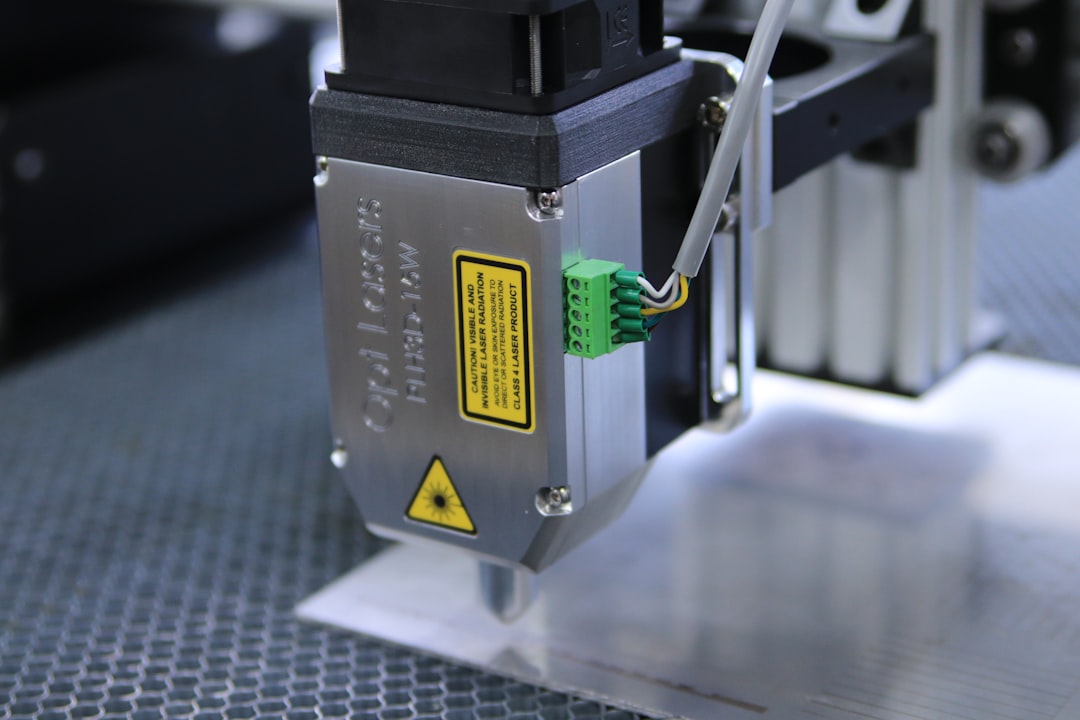Laser hair removal is a popular cosmetic procedure that utilizes concentrated beams of light to target and eliminate unwanted hair. The technology behind this method is based on the principle of selective photothermolysis, where the laser light is absorbed by the pigment in the hair follicles. This absorption generates heat, which effectively destroys the follicle and inhibits future hair growth.
As you consider this option, it’s essential to understand how it works and what makes it different from traditional hair removal methods. One of the primary advantages of laser hair removal is its precision. Unlike shaving or waxing, which can lead to ingrown hairs and skin irritation, laser treatment specifically targets hair follicles while leaving the surrounding skin unharmed.
This precision not only minimizes discomfort but also enhances the overall effectiveness of the procedure. Additionally, laser hair removal can be performed on various body parts, including the face, legs, underarms, and bikini area, making it a versatile choice for many individuals seeking a long-term solution to unwanted hair.
Key Takeaways
- Laser hair removal uses concentrated light to target and destroy hair follicles, leading to permanent hair reduction.
- Before laser hair removal, it’s important to avoid sun exposure and certain hair removal methods to ensure the best results.
- During laser hair removal, patients may experience a slight discomfort or sensation of heat, but it is generally well-tolerated.
- After laser hair removal, it’s important to protect the treated area from sun exposure and follow the dermatologist’s aftercare instructions.
- Potential risks and side effects of laser hair removal include skin irritation, redness, and changes in skin pigmentation, but these are usually temporary.
Preparing for Laser Hair Removal
Preparation is key to ensuring a successful laser hair removal experience. Before your appointment, you should schedule a consultation with a qualified dermatologist or licensed technician. During this initial meeting, you will discuss your medical history, skin type, and hair color, all of which play a crucial role in determining the best approach for your treatment.
It’s important to be open and honest about any medications you are taking or skin conditions you may have, as these factors can influence the outcome of the procedure. In the weeks leading up to your treatment, you should avoid sun exposure and tanning beds. Tanned skin can increase the risk of complications and may affect the laser’s ability to target hair follicles effectively.
Additionally, refrain from waxing or plucking hair for at least four to six weeks before your appointment, as these methods remove the hair from the follicle, which is necessary for the laser to work effectively.
What to Expect During Laser Hair Removal

On the day of your laser hair removal appointment, you will arrive at the clinic ready for your treatment. The session typically begins with a consultation to review any last-minute questions or concerns you may have. Once you’re comfortable, the technician will provide protective eyewear to shield your eyes from the laser light.
Depending on the area being treated and your pain tolerance, a topical anesthetic may be applied to minimize discomfort during the procedure. As the treatment begins, you will feel a sensation similar to a rubber band snapping against your skin as the laser pulses are delivered. The duration of the session varies based on the size of the area being treated; smaller areas like the upper lip may take just a few minutes, while larger areas like the legs can take up to an hour or more.
Throughout the process, you may notice a cooling sensation from the device used to help soothe your skin. Afterward, you will be given instructions on post-treatment care to ensure optimal results. The relevant word for the link is “laser hair removal.” Here is the link to a high authority source for more information on laser hair removal: Mayo Clinic – Laser Hair Removal
Aftercare and Recovery
| Category | Metrics |
|---|---|
| Recovery Time | Number of days or weeks required for full recovery |
| Follow-up Appointments | Number of recommended follow-up appointments with healthcare provider |
| Medication Adherence | Percentage of prescribed medications taken as directed |
| Physical Therapy Sessions | Number of recommended physical therapy sessions per week |
After your laser hair removal session, it’s essential to follow proper aftercare guidelines to promote healing and minimize any potential side effects. You may experience some redness or swelling in the treated area, similar to a mild sunburn. Applying a soothing aloe vera gel or cold compress can help alleviate discomfort and reduce inflammation.
It’s also advisable to avoid hot baths, saunas, and vigorous exercise for at least 24 hours post-treatment to prevent irritation. In addition to managing immediate side effects, you should also protect your skin from sun exposure during the healing process. Wearing sunscreen with a high SPF is crucial, as your skin may be more sensitive after treatment.
Avoiding direct sunlight for several weeks will help prevent pigmentation changes and ensure that your skin heals properly. As you continue with your aftercare routine, keep an eye out for any unusual reactions and consult your dermatologist if you have concerns.
Potential Risks and Side Effects
While laser hair removal is generally considered safe, it’s important to be aware of potential risks and side effects associated with the procedure. Common side effects include temporary redness, swelling, and mild discomfort in the treated area. These symptoms usually subside within a few hours to a few days.
However, in rare cases, more severe reactions can occur, such as blistering or changes in skin pigmentation. To minimize risks, it’s crucial to choose a qualified practitioner who uses FDA-approved equipment and follows safety protocols. Individuals with darker skin tones may be at a higher risk for pigmentation changes if not treated by an experienced technician familiar with different skin types.
Always discuss any concerns with your dermatologist before proceeding with treatment to ensure that you are fully informed about potential outcomes.
Maintenance and Follow-Up Treatments

Laser hair removal is not a one-time solution; it typically requires multiple sessions for optimal results. Most individuals need between three to seven treatments spaced several weeks apart to achieve significant hair reduction. The exact number of sessions will depend on various factors, including hair thickness, color, and growth cycle.
After completing your initial series of treatments, maintenance sessions may be recommended every six months to a year to keep unwanted hair at bay. During follow-up appointments, your technician will assess your progress and determine if additional treatments are necessary. Some individuals may notice that hair regrowth is finer and lighter after their initial sessions, while others may require more frequent maintenance due to hormonal changes or other factors that can affect hair growth.
Staying consistent with follow-up treatments will help ensure long-lasting results and keep unwanted hair under control.
Choosing the Right Dermatologist for Laser Hair Removal
Selecting a qualified dermatologist or licensed technician is crucial for a successful laser hair removal experience. Start by researching practitioners in your area and reading reviews from previous clients. Look for professionals who specialize in laser treatments and have extensive experience with various skin types and hair colors.
A reputable practitioner will be happy to provide before-and-after photos of previous clients and discuss their qualifications. During your initial consultation, pay attention to how comfortable you feel with the practitioner. They should take the time to answer your questions thoroughly and explain the procedure in detail.
A good dermatologist will also assess your skin type and hair characteristics before recommending a personalized treatment plan tailored to your needs. Trusting your practitioner is essential for achieving satisfactory results and ensuring a positive experience throughout your laser hair removal journey.
Alternative Hair Removal Methods
While laser hair removal offers many benefits, it’s not the only option available for managing unwanted hair. Traditional methods such as shaving, waxing, and depilatory creams remain popular choices for many individuals seeking temporary solutions. Shaving is quick and easy but requires frequent upkeep; waxing provides longer-lasting results but can be painful and may lead to ingrown hairs.
For those looking for alternatives that offer longer-lasting results without lasers, electrolysis is another option worth considering. This method involves using an electric current to destroy individual hair follicles and is effective for all skin types and hair colors. However, electrolysis can be time-consuming since each follicle must be treated separately.
Ultimately, choosing the right hair removal method depends on your personal preferences, pain tolerance, budget, and desired results.
If you’re interested in learning more about laser hair removal, you may want to check out the article on what to expect during your first laser hair removal treatment. This article provides valuable insights into the process and what dermatologists recommend for optimal results. It’s a great resource for anyone considering laser hair removal as a long-term solution for unwanted hair.
FAQs
What is laser hair removal?
Laser hair removal is a cosmetic procedure that uses a concentrated beam of light (laser) to remove unwanted hair.
How does laser hair removal work?
During the procedure, the laser emits a light that is absorbed by the pigment (melanin) in the hair. The light energy is converted to heat, which damages the hair follicles, inhibiting future hair growth.
Is laser hair removal safe?
When performed by a qualified and experienced dermatologist or licensed technician, laser hair removal is generally considered safe. However, there are potential risks and side effects, such as skin irritation, redness, and changes in skin pigmentation.
How many sessions are typically needed for laser hair removal?
The number of sessions needed for laser hair removal varies depending on factors such as the individual’s hair color, skin type, and the area being treated. On average, multiple sessions spaced several weeks apart are required to achieve optimal results.
What do dermatologists say about laser hair removal?
Dermatologists generally consider laser hair removal to be an effective and safe method for long-term hair reduction. They emphasize the importance of seeking treatment from a qualified professional to minimize the risk of complications.






